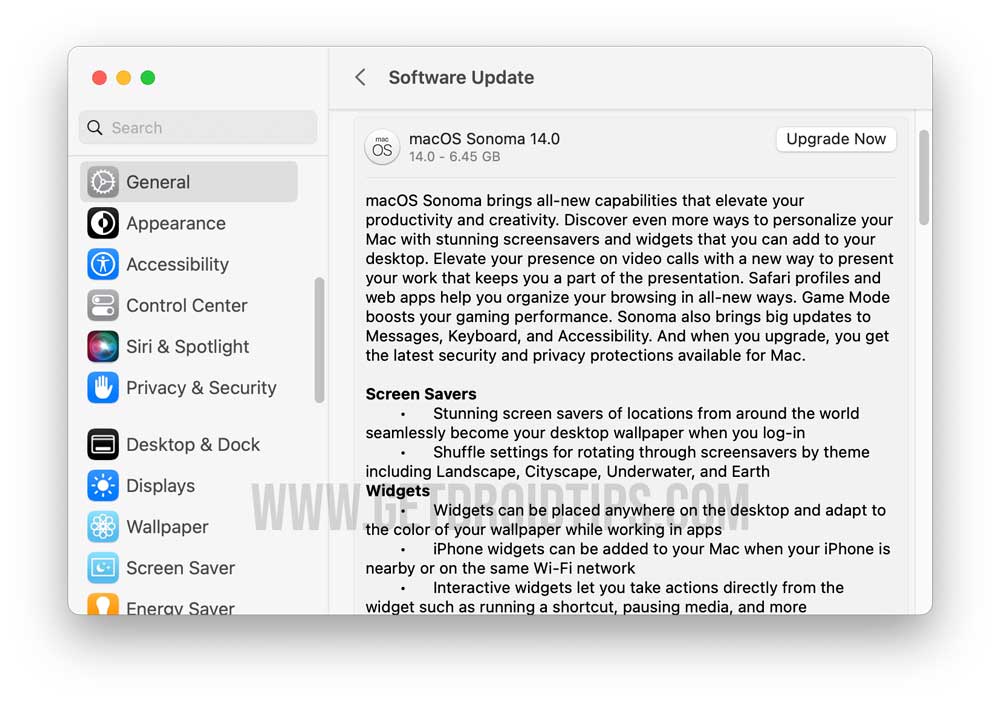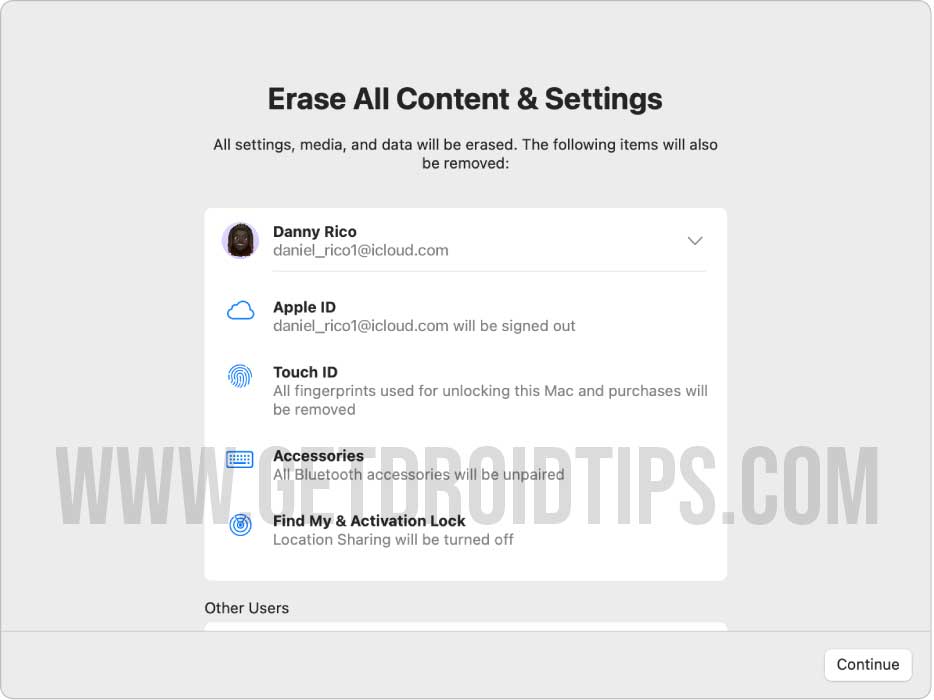macOS Sonoma is the most recent Apple operating system that brings innovative features and improvements to your Mac. However, the most recent edition includes unforeseen faults, flaws, and more exciting features and capabilities. Unfortunately, several users encountered an issue with their macOS Sonoma which is continuously restarting while operating it.
However, experiencing a macOS Sonoma system that constantly restarts can be annoying and disruptive to your work or leisure activities. Well, if you have the same issue on your macOS Sonoma, don’t worry; you are not alone. In this article, we will explore some common causes for this problem and provide effective solutions that you can take to troubleshoot it without much hassle. So, without any further ado, let’s get right into it.

Page Contents
macOS Sonoma Keeps Restarting; how to Fix?
To be precise, macOS Sonoma keeps restarting is generally caused by numerous reasons, including an outdated software version, software conflicts and bugs, third-party interference, battery problems, hardware issues, etc. According to several sources, most users encountered the issue after updating the device software version, which may include several problems and conflicts in addition to its existing features and improvements.
Therefore, these are some common reasons why the macOS Sonoma keeps restarting. Now, let’s focus on the effective solutions listed in this guide. Pay close attention to every solution until you find the one that best addresses the problem you are experiencing on your macOS Sonoma.
Solution 1: Force Restart Your Mac
The foremost solution you must do is try to force restart your Mac device. It could be possible that there could be a software bug or system glitches which are causing the random restart issue. In that case, you should force restart your Mac device and check if the problem is resolved. What it does is it clears the temporary caches or glitches and refreshes the background applications and their processes. This solution is pretty straightforward to do.
Hold the power button for about 10 seconds to force restart your macOS Sonoma, and then your Mac will shut down automatically. After that, hold down the power button, and your device should restart in a few seconds. Once the device is restarted, check if the issue has been resolved.
Solution 2: Update Your Device
If force restarting the Mac device doesn’t fix the problem, you next have to update your Mac device to the latest version. Installing the stable build of macOS Sonoma (version 14) does not guarantee that your Mac won’t experience any issues and software conflicts. On the other hand, most users encountered the keep restarting issues after installing the stable version of the macOS Sonoma.
Although developers occasionally offer updates (including security patches and latest build updates) to look into people’s problems with their Mac devices. Therefore, if your macOS Sonoma keeps restarting, you should try updating the latest version of the Mac. The updates may include the build version and security patches, and it’s necessary to update them.
Here’s how you can check for updates on your macOS Sonoma:
- Click on the Apple Menu in the upper left corner of the screen.
Select System Settings. - Click on the General on the left-hand side.
- Select Software Update from the on the right side.

- Download and install the update on the screen if available.
- Once the update is finished, restart your Mac to apply changes.
Once you have successfully updated your macOS Sonoma to the latest version, try to check whether the restart issue has been resolved. If the issue persists, try the next solution below.
Solution 3: Remove Third-party Apps
Most of the time, your macOS Sonoma frequently restarts due to third-party programs and applications that interact with Mac devices and cause frequent restarts. In such a case, you have to remove third-party applications causing the Mac device issue. You can easily resolve the problem on your Mac by uninstalling the third-party applications and programs. Therefore, it is considered to remove the applications that are causing the error and then you should be good to go. Make sure to restart your device once again after uninstalling the third-party applications.
Solution 4: Boot Into Safe Mode
Your macOS Sonoma may be constantly restarting due to interference from third-party applications and software, which could be the root of the problem. In such a case, you should try booting your Mac into safe mode and then check if it’s working. To boot your Mac into safe mode, follow the steps below:
- On your Mac, choose Apple Menu in the upper right corner.
- Click on the Shut Down from the pop-up menu.
- Wait for your Mac to shut down completely.
- Next, press and hold the power button on your Mac until “Loading startup options” appear.
- Select a volume, press and hold the Shift key, then click Continue in Safe Mode.
Now the computer restarts automatically. Once the login window appears, you should see “Safe Mode” in the menu bar. After that, try checking if the issue has been fixed. If the issue persists, try the next solution.
Solution 5: Factory Reset Your Mac
If you have tried the above workarounds and it doesn’t work to solve the problem, you should try performing a factory reset on your macOS Sonoma. However, it might be possible that your Mac keeps restarting due to software issues and glitches on the system. Remember that take a complete backup of your Mac device as the process we are going to process can completely erase all your contents, media, and settings. Therefore, it’s worth it to take a backup of your Mac.
To factory reset your macOS Sonoma, follow the steps below:
-
- Click on the Apple icon menu in the upper left corner of the screen.
- Click on the System Settings.
- On the left-hand side, select General.
- Next, click the Transfer or Reset option > Erase All Content and Settings.
- Enter your password to unlock Erase Assistant.
- Click on Continue > and enter your Apple password.

- Finally, click on the Erase All Content & Settings.
The reset process for your macOS Sonoma will now begin. Wait till the reset process is finished. Be patient as the process takes some time to complete. Afterwards, follow the screen instructions to complete the setup process and then check if the issue has been resolved.
Solution 6: Check Your Hardware
You also have to check for hardware issues on your macOS Sonoma. Most of the time, your macOS Sonoma keeps restarting due to hardware issues, including the attached cables and hard drives. To fix the problem, shut down your Mac and disconnect all peripheral devices (such as connected cables, hard drives, or printer) from your Mac. After that, turn on your Mac and then use it to verify whether the issue has been resolved.
If disconnecting the external devices doesn’t resolve the problem, isolate the issue with a specific device. Attach one device at a time, testing it after each one, until the problem is fixed. Alternatively, ensure the battery is operating well and has no defects. If the issue persists, try our last resort.
Solution 7: Seek Professional Help
If you have tried the above solutions and it doesn’t work to solve the issue, it’s time to seek professional help. It might be possible your Mac device keeps restarting because of either software or hardware issues. For such a case, seeking professional help or visiting a nearby service center is the best choice to fix the problem on your macOS Sonoma. If they inquire as to why your Mac device keeps restarting at a time, answer them carefully and they probably suggest their best solutions.
Wrapping Up
Frequent restarts on your macOS Sonoma can be caused by several reasons, ranging from software conflicts to hardware issues. Thankfully, you can easily troubleshoot the issue by following our listed solutions in this guide. Make sure to follow each and every step carefully, then you can systematically identify and resolve the problem. In case the above-mentioned solutions don’t work for you, it considers contacting support team or visit nearby Apple Store for assistance. We assume this guide was helpful to you. For further queries, you can leave a comment.
